About weaving (2)
About weaving (2)
Hi,
We'd like to talk about the process of weaving selvedge denim today! Hope you will enjoy it.
It has been a little while since we last wrote about dyeing, and the preparation of weaving, so let us begin with a brief review.
Denim is yarn-dyed fabric, so the yarn is dyed first and then woven.
Japanese denim is basically dyed by a method called "Rope dyeing".
After dyeing is completed, the yarns are subjected to the following post-processing steps
- Separating: The yarns are separated one by one and arranged in sheets.
- Sizing : The yarns are glued for easy weaving, and the warp yarns are shaped to the fabrics's specifications and rolled up on a beam (=a huge bobbin).
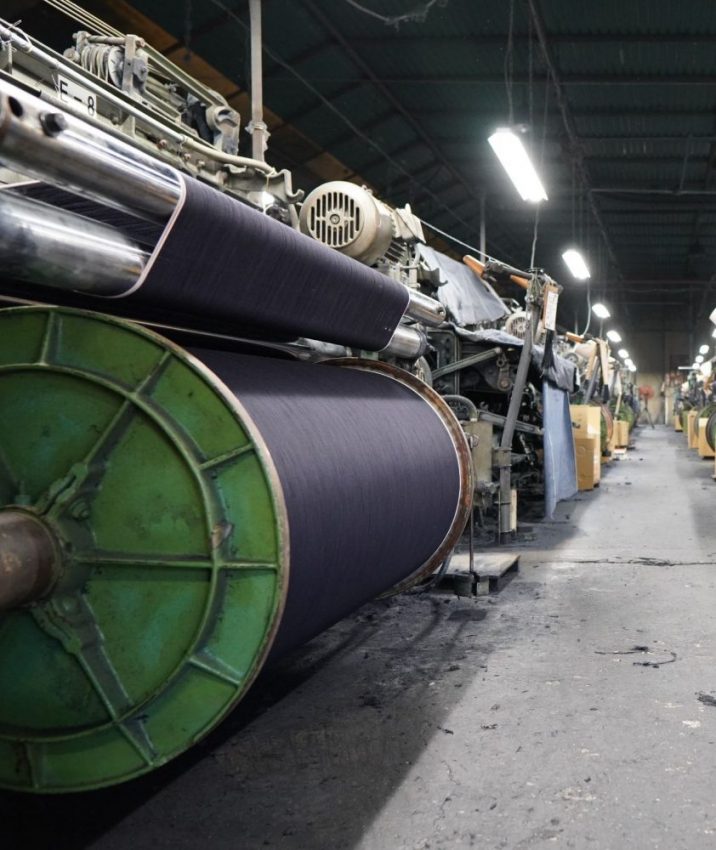
After the beam is rolled in the dyeing process, it is moved to the weaving process and set on the loom.
The fabric is composed of warp and weft yarns, which can be combined in various ways to produce a variety of fabric structures.
The warp yarns must move independently, so the warp yarns are firstly set through one by one to the "reed" which is used to separate and space the warp yarns to guide the shuttle's motion across the loom, and the "heddles" which are the parts that move the warp yarns up and down.
This process is called "warp threading". It is a detailed process but basically all done by hand.
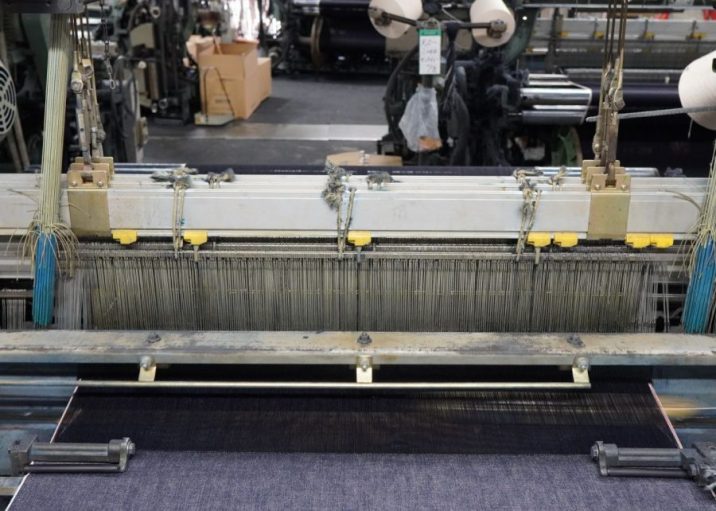
This completes the preparation.
From here, weaving craftspeople begin the "gating (Oritsuke) ".
"Gating (Oritsuke) " is a trial weaving, in which they adjust the loom according to the climate, humidity, and yarn condition while imagining the finished fabric. They also check the loom's behavior and repair problems or malfunctions if happened.
This is an extremely important process because the condition of the threads and loom differs between the dry winter season and the humid rainy season, and without fine adjustments, the finished fabric may have a slightly different appearance or suffer from defects such as yarn breakages.
If there are no problems with the "Oritsuke", we start bulk production.
The basic structure of denim fabric is 3/1 twill weave.
The 3/1 twill weave consists of four warp yarns, three on the top, one on the bottom, and one weft yarn passing between the warp yarns.
The one with the twill line going to the upper right corner is the right hand twill, and the opposite is the left hand twill (basically, denim tend to be right hand twill).
The part used to thread the weft yarn is called a shuttle, which is the origin of the shuttle loom's name.
The shuttle looks like the one in the photo below, is equipped with a wooden tube with yarns sown in the center and carries the weft yarns to the left and right.
This movement is the reason why it is called a "shuttle loom".
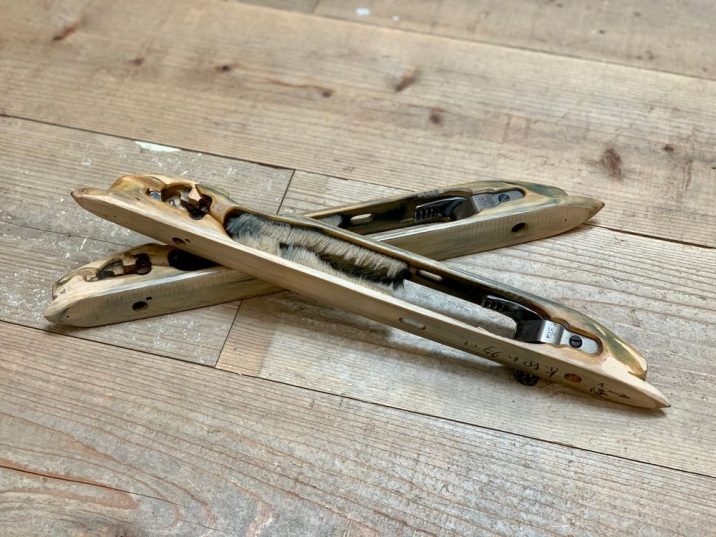
< Shuttle >
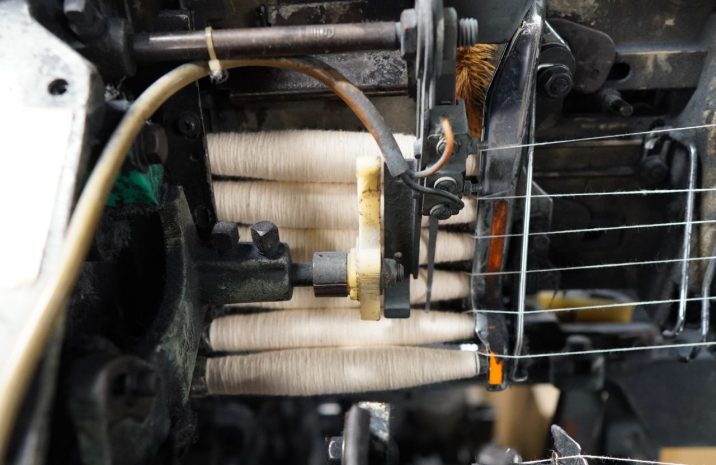
< Wooden tube >
When the yarn rolled on the wooden tube runs out, it is automatically ejected from the shuttle, and at the same time, a wooden tube with a new yarn is inserted to continue weaving the fabric without stopping.
Weft yarns that go from right to left return from left to right, so that the edges of the fabric are connected and do not fray.
By inserting yarns of a different color from the fabric at these edges, differentiated the products from those of other companies, which is now known as "selvedge".
Incidentally, today's high-speed looms have been innovated to increase productivity, do not have shuttles.
In order to weave more quickly, the structure has changed to one in which only the yarns are moved at high speed, rather than being moved left and right by a heavy shuttle loaded with yarns.
The yarns are drove into the weft and the next weft yarn is supplied, so the weft yarns are not connected and there is no selvedge.
We would like to show you guys about the innovative (shuttle-less) loom, but since this time it is about the shuttle loom, we will leave it for another time!
Although shuttle looms (also called automatic looms) have evolved through minor changes since their appearance in the 1920s, their basic structure has remained unchanged.
Compared to the latest models, it is still more difficult to handle and requires constant fine-tuning.
In addition, since the production itself has been discontinued, it is not possible to contact the manufacturer in case of breakdowns, so maintenance is also a work of the craftsperson.
As mentioned earlier, the condition of a shuttle loom changes depending on the season, humidity, and other minor conditions.
The skill of the craftsperson is very important in weaving high quality fabrics.
The shuttle loom was put back into operation for the purpose of reproducing vintage fabrics using old looms.
The selvedge denim continues to evolve thanks to the efforts of craftspeople who know the old days and not only reproduce the old fabrics, but also improve the quality of the fabric.
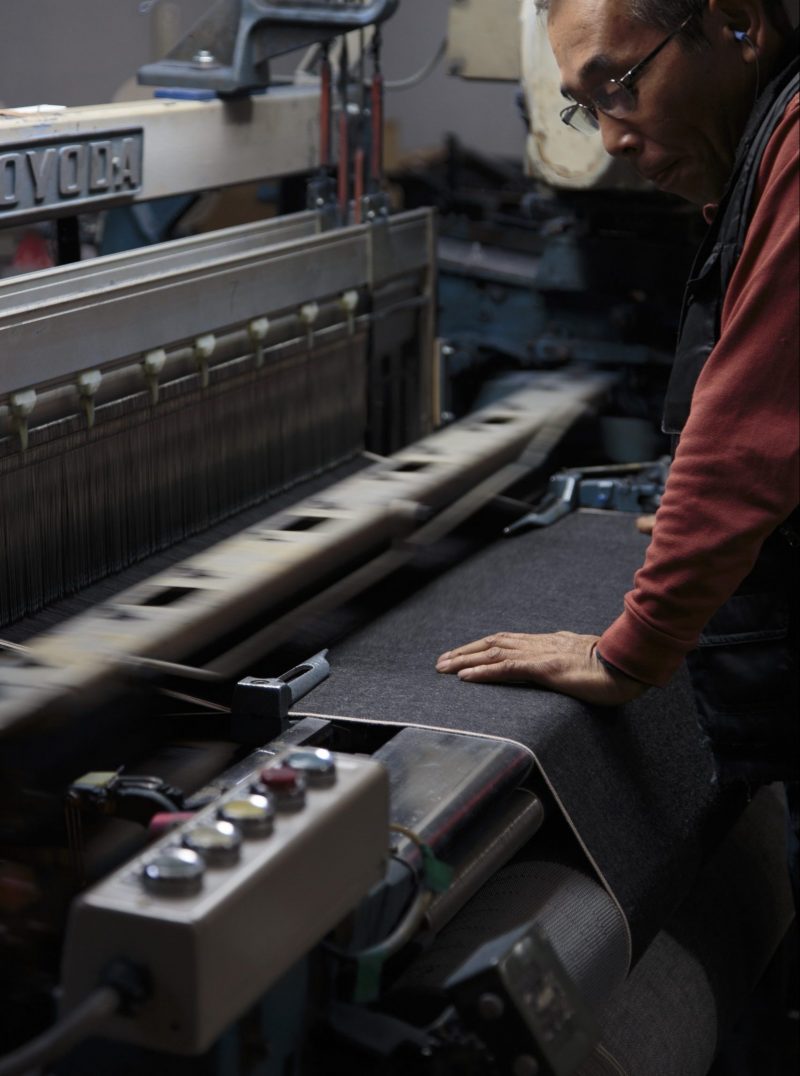
We got off track a little bit, but this was about weaving on shuttle looms.
Next time, we will write about the final process of denim production, "finishing". Looking forward to it!
